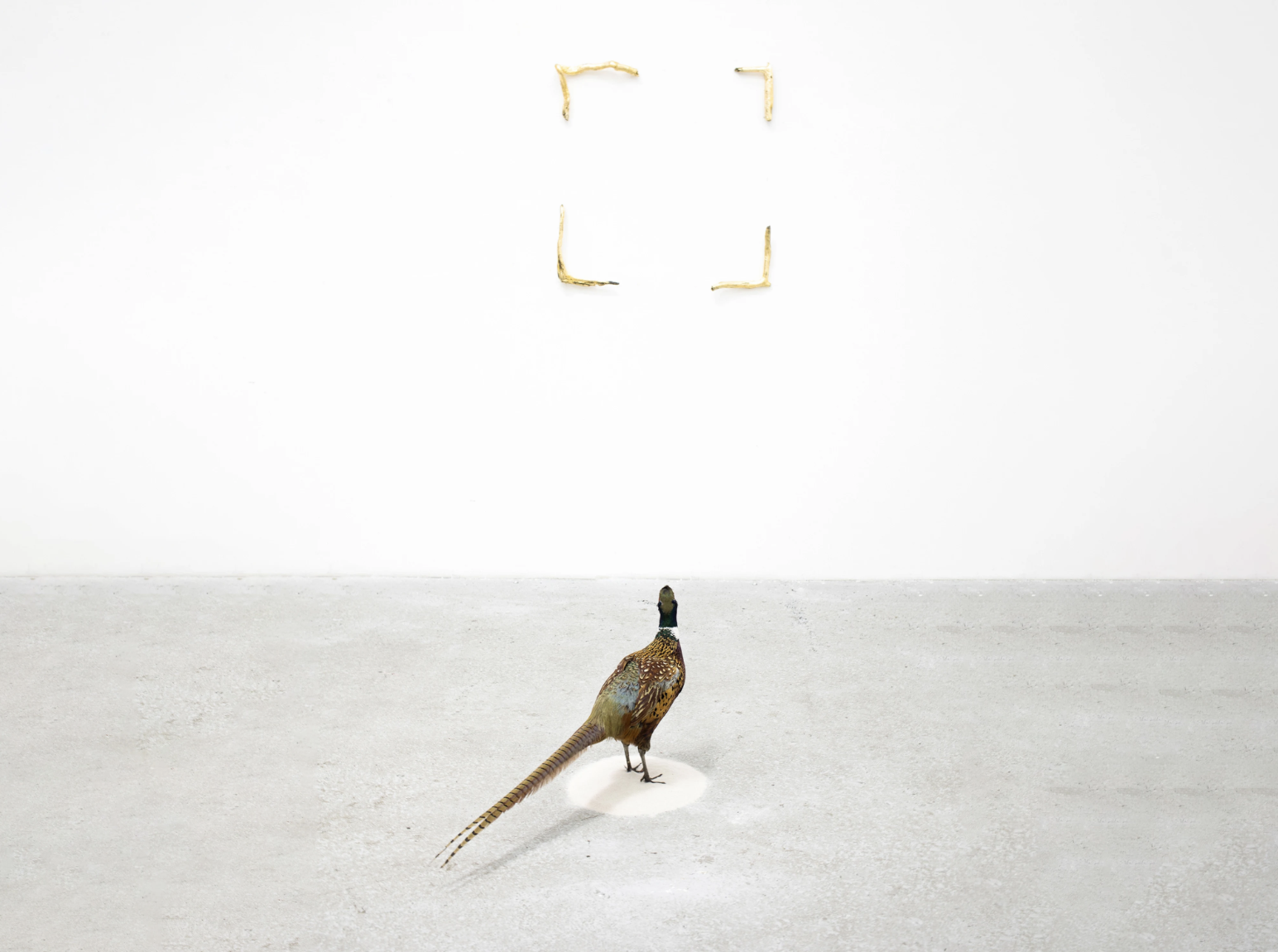Cuerpo de Obra
And how will the artist capture and preserve the fleeting moment?
Adolfo Riestra. Original quote translated into English
This modest effort to exhibit his Body of Work is declared partial. No exhaustive or definitive review was attempted. These signs are offered separately, like a game that allows for the reassembly of another body, the reinvention of another form and another and another. This exhibition is a remembrance.

His drawings teem with outlawed bodies; they form a revolutionary somateca*—both for his time, the 80s, and ours—by demanding a disidentification. These beings refuse the construction of a stable ego, resist identity labels, and flee fixation through contradiction: they are immobile inks chasing the lightness and mutability of the wind.
This somateca is filled with monstrous and beautiful inventions: arms stretching to deformity, twisted torsos, swollen thighs, enlarged genitals, steroidal breasts, falling, delicate buttocks, hermaphroditic creatures. Everything in his drawings is flawed, abject desire, capricious forms. His drawings don’t oppose beauty; they implant it with new standards: his song is that of a bird few understand.
Excerpt from Curatorial Text for Cuerpo de Obra, Mauricio Marcin
* The term "somateca," coined by Paul B. Preciado, describes how bodies act as living archives shaped by discourses, practices, and power technologies, transforming identity and subjectivity.
Adolfo shares—alongside many others—the recognition of this political and aesthetic operation. His body of work is a cry in the middle of a crater, a crater that becomes a beach, a pleasure that becomes death, a spiral.
Excerpt from Curatorial Text for Cuerpo de Obra, Mauricio Marcin
%20-%20original.jpg)
%20-%20original.jpg)
Whenever Adolfo mastered a pictorial style, he abandoned it, rejecting its mastery, as the controllable and predictable ceased to offer him a spectrum of possibilities, as if his desire was satisfied.
Excerpt from Curatorial Text for Cuerpo de Obra, Mauricio Marcin
Working with clay—a tradition deeply rooted in both western and eastern Mexico—has always sparked my curiosity and driven me to explore the essence of fantastical figures emerging from the moist, moldable earth. Like a hollow gourd, the clay is kneaded and shaped, always leaving breathing spaces, surrounded by a delicate, pastry-thin surface. At the same time, its construction is a form of architecture, requiring walls and vaults, tunnels, and spacious halls, where windows, chimneys, and porticoes connect with the outside world.
Adolfo Riestra. Original quote translated into English.


Adolfo was an intensely passionate person. Everything in his world held deep meaning, allowing no room for half-measures or lukewarm feelings. He lived, loved, cooked, ate, drew, painted, and sculpted with this fervor—defying all odds, whether we liked it or understood it. His work ethic was the same: intense and relentless.
Adolfo Riestra, Galería OMR, Mexico City, 1994.
%20-%20original.jpg)
With clay, you can conceal a ruby... The art of working with clay—a long-standing tradition in both western and eastern Mexico—has always piqued my curiosity, driving my desire to uncover the essence of fantastical figures emerging from the moist, moldable earth. Hollow like a gourd, clay is kneaded and shaped, always leaving breathing spaces, surrounded by a surface as thin as pastry. This process resembles architecture, requiring walls and vaults, tunnels and hallways, spacious rooms with windows, chimneys, and porticoes connecting to the outside.
Clay sculpture is an exploration of inner forms, an adventure through infinite expanses, a journey to depths where imagination freely evolves. Unknown individuals' shapes, volumes, and gestures emerge—faces with long, wide noses, hands with slender fingers, and sometimes mysterious, coarse hands forming characters with unique personalities.
—Living inside a figure is more fascinating than seeing it from the outside.
Adolfo Riestra, “Con barro se puede tapar un rubí…”. Original quote translated into English.


"Since I can remember, my brother was always drawing or painting with whatever was available: he experimented humorously on all kinds of surfaces, creating incredible things like collages or even mixing paint with beans. His works resulted in images that I thought were masterpieces at the time."
Jaime Riestra, Publication "OMR", 2019. Ed. Turner Libros.
%20-%20original.jpg)


Adolfo had to invent in each drawing what he wished existed in reality; through a symbolic-demiurgic operation, he made each painting lavish consistency on the world and the fact is that to make art is to bring forth the space one wishes to inhabit.
Excerpt from Curatorial Text for Cuerpo de Obra, Mauricio Marcin



%20-%20original.jpg)
%20-%20original.jpg)

%20-%20original.jpg)
%20-%20original.jpg)
%20-%20original.jpg)

%20-%20original.jpg)
%20-%20original.jpg)
%20-%20original.jpg)
%20-%20original.jpg)
%20-%20original.jpg)
%20-%20original.jpg)
%20-%20original.jpg)
%20-%20original.jpg)
%20-%20original.jpg)
%20-%20original.jpg)
%20-%20original.jpg)

%20-%20original.jpg)
%20-%20original.jpg)

%20-%20original.jpg)
%20-%20original.jpg)
%20-%20original.jpg)

%20-%20original.jpg)
%20-%20original.jpg)
%20-%20original.jpg)

%20-%20original.jpg)
%20-%20original.jpg)


%20-%20original.jpg)
%20-%20original.jpg)
%20-%20original.jpg)


%20-%20original.jpg)


%20-%20original%20-b.jpg)
%20-%20original.jpg)


%20-%20original-b.jpg)
%20-%20original.jpg)


%20-%20original.jpg)
%20-%20original.jpg)


%20-%20original.jpg)
%20-%20original.jpg)
%20-%20original.jpg)


%20-%20original.jpg)
%20-%20original.jpg)
%20-%20original.jpg)

%20-%20original.jpg)
%20-%20original.jpg)
%20-%20original.jpg)

%20-%20original.jpg)
%20-%20original.jpg)

%20-%20original.jpg)
%20-%20original.jpg)
%20-%20original.jpg)

%20-%20original.jpg)
%20-%20original.jpg)
%20-%20original.jpg)
%20-%20original.jpg)

%20-%20original.jpg)
%20-%20original.jpg)
%20-%20original.jpg)

%20-%20original.jpg)
%20-%20original.jpg)


%20-%20original.jpg)
%20-%20original.jpg)


%20-%20original.jpg)
%20-%20original.jpg)


%20-%20original.jpg)
%20-%20original.jpg)

%20-%20original.jpg)
%20-%20original.jpg)

%20-%20original.jpg)
%20-%20original.jpg)


%20-%20original.jpg)
%20-%20original.jpg)


%20-%20original.jpg)
%20-%20original.jpg)


%20-%20original.jpg)
%20-%20original.jpg)






























































































%20-%20original.jpg)